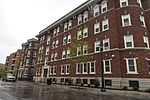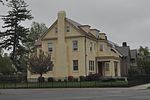Westfield River

The Westfield River is a major tributary of the Connecticut River located in the Berkshires and Pioneer Valley regions of western Massachusetts. With four major tributary branches that converge west of the city of Westfield, it flows 78.1 miles (125.7 km) (measured from the source of its North Branch) before its confluence with the Connecticut River at Agawam, across from the city of Springfield's Metro Center district. Known for its whitewater rapids and scenery, the Westfield River provides over 50 miles (80 km) of whitewater canoeing and kayaking, in addition to one of the largest roadless wilderness areas remaining in the Commonwealth.The Westfield River is the Connecticut River's longest tributary in Massachusetts, although the Chicopee River's basin is much larger, and contributes more water to the Connecticut. The Connecticut's northern tributary, the Deerfield River, is nearly as long as the Westfield, being only 2.1 miles (3.4 km) shorter. During the mid-20th century, the Westfield River was so polluted that it would change color based on the nature of the contaminant. Today, the river is clean enough for swimming. It is a state and locally managed river featuring native trout fishing and rugged mountain scenery in the context of a historical mill town settlement (at Westfield).
Excerpt from the Wikipedia article Westfield River (License: CC BY-SA 3.0, Authors, Images).Westfield River
Cross Street,
Geographical coordinates (GPS) Address Nearby Places Show on map
Geographical coordinates (GPS)
| Latitude | Longitude |
|---|---|
| N 42.084166666667 ° | E -72.585555555556 ° |
Address
Pynchon Point
Cross Street
01144
Massachusetts, United States
Open on Google Maps










